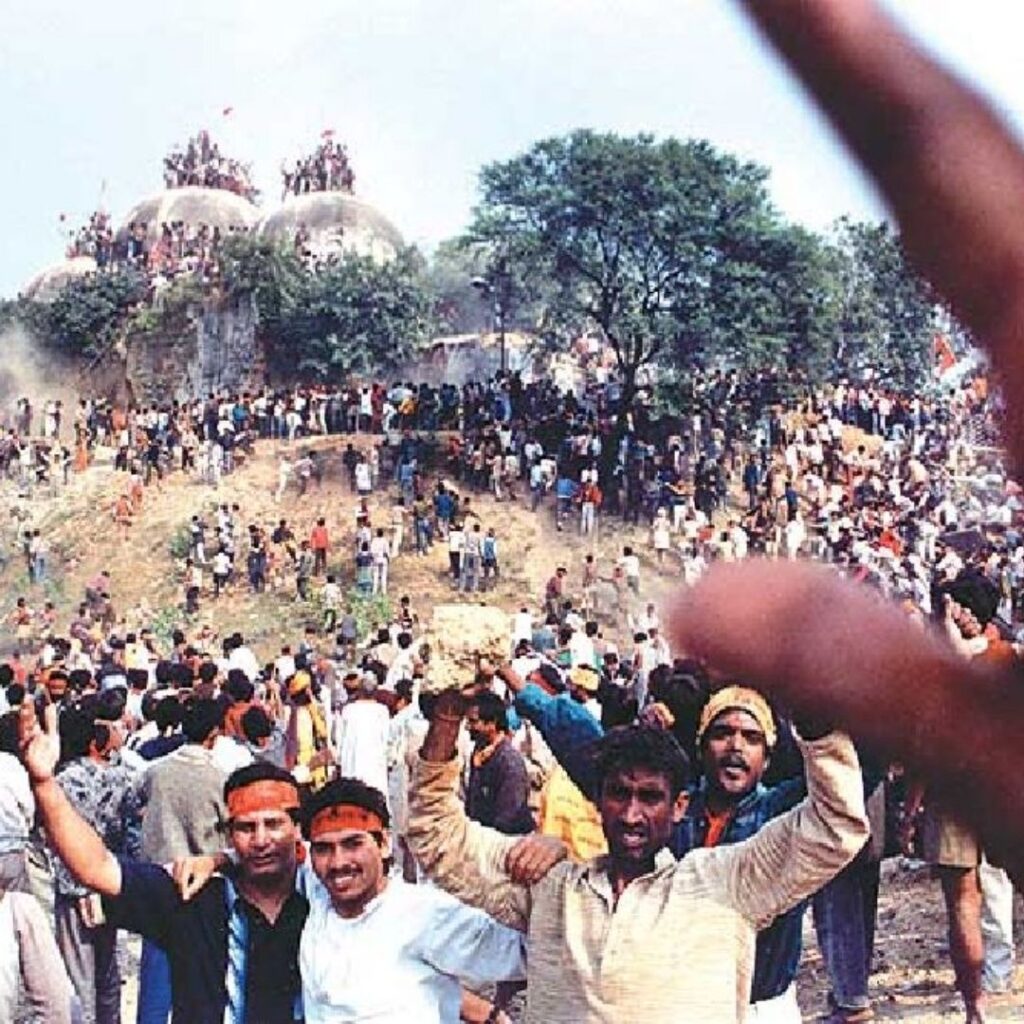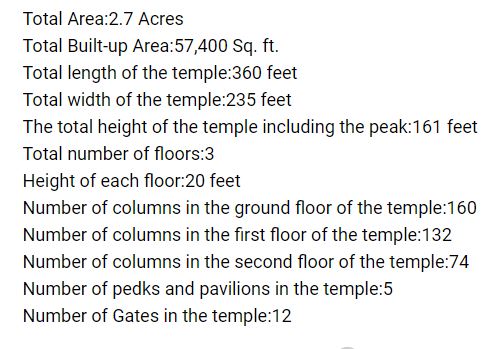Ram Mandir in Ayodhya is a Hindu temple being built at the site of Ram Janmabhoomi, the birthplace of Lord Rama, a revered Hindu deity.
Read More Ayodhya Ram Mandir Opening Date 2024: Everything You Need to Know
Read more Ram Mandir Pran Pratishtha Date: A Monumental Moment for India
Read more 12 Jyotirlinga Name and Place: Know about it
What is Ram Mandir in Ayodhya?
Ram Mandir is a Hindu temple that is under construction in Ayodhya, Uttar Pradesh, India. It is located at the site of Ram Janmabhoomi, the hypothesized birthplace of Rama, a principal deity of Hinduism.
Why is Ram Mandir important for Hindus?
Rama is believed to be the seventh avatar of Vishnu, one of the supreme gods in Hinduism. According to the ancient Indian epic, Ramayana, Rama was born in Ayodhya and ruled there as a righteous king. He is revered as an ideal hero, a symbol of virtue, and a role model for humanity.

Ram Mandir is seen as a symbol of the faith, culture, and history of Hindus. It is also a manifestation of their long-standing desire to reclaim the site that was once occupied by a mosque, the Babri Masjid, which was demolished by Hindu activists in 1992.
Read more about Ayodhya Ram Mandir Timing for Darshan 2024
What is the history of the Ram Mandir dispute?
The Ram Mandir dispute is one of the most contentious and complex issues in Indian politics and society. It involves the ownership and use of a 2.77-acre plot of land in Ayodhya, where both Hindus and Muslims claim religious rights and sentiments.
The dispute dates back to the 16th century, when the Mughal emperor Babur allegedly destroyed a temple dedicated to Rama and built a mosque, the Babri Masjid, on the same site. Since then, the site has witnessed several episodes of violence, litigation, and negotiation between the two communities.
The most notable event was the demolition of the Babri Masjid by Hindu activists on 6 December 1992, which triggered widespread riots and communal clashes across India, killing more than 2,000 people.

The legal battle over the site continued for decades, until the Supreme Court of India delivered its final verdict on 9 November 2019. The court ruled in favor of the Hindus and awarded them the entire disputed land for the construction of the Ram Mandir. The court also ordered the government to allot an alternative five-acre land to the Muslims for building a mosque.
How is Ram Mandir being built?
Ram Mandir is being built by the Shri Ram Janmabhoomi Teerth Kshetra trust, a body set up by the government to oversee the temple construction and management. The trust was formed on 5 February 2020, following the Supreme Court’s verdict.
Who are the key people and organizations involved in Ram Mandir construction?
The Ram Mandir construction involves the collaboration of several people and organizations, such as:
- Narendra Modi, the Prime Minister of India, who performed the groundbreaking ceremony of the temple on 5 August 2020.
- Yogi Adityanath, the Chief Minister of Uttar Pradesh, who has been actively supporting and facilitating the temple project.
- Sompura family, a lineage of temple architects who have designed and built several famous temples in India. They are the architects of the Ram Mandir.
- Larsen & Toubro, a multinational engineering and construction company that is the contractor of the temple project. They have offered to do the work free of cost.
- Tata Consulting Engineers, a leading engineering consultancy firm that is the project management consultant of the temple project.
- Central Building Research Institute, National Geophysical Research Institute, and Indian Institutes of Technology, among others, who are assisting in areas such as soil testing, concrete, and design.
- Indian Space Research Organisation, which has identified a stream of the Sarayu river that flows under the temple site.
- Vishwa Hindu Parishad, a Hindu nationalist organization that has been spearheading the Ram Mandir movement since the 1980s. They have also collected funds and donations for the temple construction.
What are the features and specifications of Ram Mandir?
Ram Mandir is designed to be a grand and majestic structure, reflecting the traditional Hindu temple architecture. Some of the features and specifications of the temple are:

- The temple will have three floors, with a total height of 161 feet.
- The temple will have a central dome, surrounded by four smaller domes.
- The temple will have five entrances, named after the five rivers of India: Ganga, Yamuna, Godavari, Saraswati, and Narmada.
- The temple will have a sanctum sanctorum, where the idol of Ram Lalla, the infant form of Rama, will be installed.
- The temple will have a hall of pillars, where 212 pillars, carved with scenes from the Ramayana, will support the roof.
- The temple will have a gallery of paintings, where 120 paintings, depicting the life and teachings of Rama, will adorn the walls.
- The temple will have a museum, a library, a research center, and a food court, among other facilities.
- The temple will be built on a 2.7-acre land, while the entire temple complex will cover 67 acres of land.
- The temple will be made of pink sandstone from Rajasthan, and marble from Makrana and Vietnam.
- The temple will be earthquake-resistant and eco-friendly, with provisions for rainwater harvesting, solar power, and waste management.

When will Ram Mandir be completed?
The Ram Mandir construction is expected to be completed by 2024, coinciding with the next general elections in India. The trust has announced that the Ram Mandir pran pratishtha date, or the consecration ceremony, of the temple will be held on 22 January 2024, which coincides with the auspicious day of Paush Shukla Dwadashi, as per the Hindu calendar, which is the auspicious day of Basant Panchami.
What are the challenges and opportunities for Ram Mandir construction?
The Ram Mandir construction faces several challenges and opportunities, such as:
- The Covid-19 pandemic, which has affected the availability of labor, materials, and funds, as well as the safety and health of the workers and devotees.
- The environmental and archaeological issues, which require careful planning and execution to preserve the natural and cultural heritage of the site.
- The security and legal threats, which may arise from the opposition or sabotage by some anti-social elements or vested interests.
- The social and political implications, which may have an impact on the communal harmony and national integration of the country.
- The religious and cultural significance, which may attract millions of pilgrims and tourists from across the world, boosting the economy and development of the region.
- The spiritual and moral inspiration, which may foster a sense of pride, devotion, and values among the people, especially the younger generation.
How to reach Ram Mandir, Ayodhya?
- Visitors can reach Ayodhya by air, rail, or road. The nearest airport to Ram Mandir is the Chaudhary Charan Singh International Airport in Lucknow, which is well-connected to major cities in India and abroad. From the airport, you can hire a taxi or take a pre-paid cab to Ayodhya, which is approximately 135 kilometres away.
- Alternatively, you can also take a connecting flight from Lucknow to the Faizabad Airport, which is closer to Ayodhya and is approximately 10 kilometers away. From Faizabad Airport, you can hire a taxi or an auto-rickshaw to reach Ram Mandir.
- Ayodhya has its own railway station, Ayodhya Junction, which is well-connected to major cities in India. Several trains, including express and superfast trains, operate to and from Ayodhya Junction. Once you reach Ayodhya Junction, you can hire an auto-rickshaw or a cycle rickshaw to reach Ram Mandir, which is approximately 6 kilometers away.
- Ayodhya is well-connected to various cities in Uttar Pradesh and neighboring states through a network of well-maintained roads. You can opt to travel by bus, taxi, or your private vehicle to reach Ram Mandir.
- Several state-run and private buses operate regular services to Ayodhya from cities like Lucknow, Varanasi, Allahabad, and Gorakhpur. The Uttar Pradesh State Road Transport Corporation (UPSRTC) provides comfortable and affordable bus services to Ayodhya.
- Once you reach Ayodhya bus station, you can hire an auto-rickshaw or a cycle rickshaw to reach Ram Mandir. Hiring a taxi or a cab is a convenient option for those who prefer a comfortable and private journey.
- You can either book a taxi in advance or find one at the airport, railway station, or bus station.
- The journey from nearby cities like Lucknow, Varanasi, or Allahabad to Ayodhya takes approximately three to four hours, depending on the distance and traffic conditions. If you prefer driving, you can reach Ayodhya by your private vehicle.
What are the timings and entry fees of Ram Mandir in Ayodhya?
The timings and entry fees of Ram Mandir in Ayodhya, are not yet announced by the trust. However, based on the existing temples in Ayodhya, it is expected that the temple will be open from 6am to 9pm, with a break from 12pm to 3pm. The entry to the temple will be free of cost, but donations will be accepted. The temple will also have online booking facilities for darshan and puja.
Read more Shree Hanuman Chalisa in English: 10 Amazing Facts
Conclusion
Ram Mandir in Ayodhya is not just a temple, but a symbol of the faith, culture, and history of Hindus. It is also a testament of the triumph of justice, peace, and harmony over injustice, violence, and conflict.
It is a project that involves the collective efforts and contributions of various people and organizations, and a vision that transcends the boundaries of time and space. It is a dream that is finally coming true, after centuries of struggle and sacrifice. It is a legacy that will be cherished and celebrated for generations to come.
Frequently Asked Questions (FAQs)
Q.1. What is the history of the Ram Mandir in Ayodhya?
Ans: The Ram Mandir in Ayodhya is a Hindu temple that is being built at the site where the Babri Masjid once stood. The Babri Masjid was demolished in 1992 by a Hindu mob, which led to widespread riots across India. The demolition of the Babri Masjid was a major turning point in Hindu-Muslim relations in India.
Q.2. What is the significance of the Ram Mandir?
Ans: The Ram Mandir is significant for Hindus because it is believed to be the birthplace of Lord Rama, a revered Hindu deity. Hindus believe that building a temple at the site will fulfill a centuries-old dream.
Q.3. What is the current status of the Ram Mandir construction?
Ans: The construction of the Ram Mandir is currently underway. The foundation stone for the temple was laid in August 2020 by Prime Minister Narendra Modi. The construction is expected to be completed by 2024.
Q.4. What are the features of the Ram Mandir?
Ans: The Ram Mandir will be a three-story temple made of red sandstone. The temple will have five domes and will be adorned with Hindu scriptures and carvings.
Q.5. How can I visit the Ram Mandir in Ayodhya?
Ans: The Ram Mandir is currently closed to the public. However, visitors can get a glimpse of the construction site from a designated viewing gallery.
Q.6. What is the impact of the Ram Mandir in Ayodhya?
Ans: The construction of the Ram Mandir is expected to have a major impact on Ayodhya. The city is already seeing a surge in tourism, and the temple is expected to attract millions of visitors each year.
Q.7. What are the challenges facing the Ram Mandir construction?
Ans: The construction of the Ram Mandir is facing a number of challenges, including security concerns, funding issues, and legal challenges.
Q.8. What is the future of the Ram Mandir?
Ans: The future of the Ram Mandir is uncertain. However, the completion of the temple is expected to be a major event for Hindus in India.
Q.9. What are some of the common misconceptions about the Ram Mandir?
Ans: There are a number of misconceptions about the Ram Mandir, including the belief that the Babri Masjid was built on the ruins of a Hindu temple.
